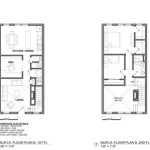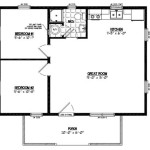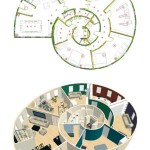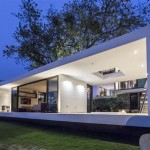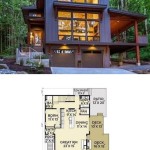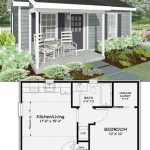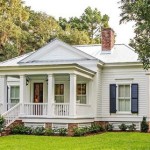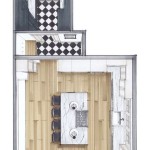Simple DIY Bird House Plans: A Guide to Building a Backyard Haven
Constructing a birdhouse offers a rewarding opportunity to contribute to local wildlife while engaging in a practical and creative project. Providing shelter and nesting sites for birds encourages biodiversity and adds an element of natural beauty to any outdoor space. This article explores several simple DIY birdhouse plans, outlines essential considerations for birdhouse design, and provides instructions for building a basic birdhouse model.
Key Considerations Before You Start Building
Prior to beginning construction, several factors should be considered to ensure the birdhouse is safe, functional, and attractive to its intended inhabitants. These considerations influence the overall design and determine the suitability of the birdhouse for specific bird species.
Species-Specific Dimensions: Different bird species require different sized entry holes and internal dimensions. Researching the local bird species and their nesting preferences is crucial. For instance, a wren will require a much smaller entrance hole than a bluebird. Providing an appropriately sized entrance helps prevent larger, more aggressive birds from taking over the nest and potentially harming the intended occupants. Resources such as the Cornell Lab of Ornithology’s website offer valuable information on birdhouse dimensions tailored to specific bird types.
Material Selection: The choice of materials directly impacts the durability and longevity of the birdhouse. Untreated wood is generally preferred, as treated lumber can leach harmful chemicals that are detrimental to birds. Cedar and redwood are excellent choices due to their natural resistance to rot and insects. Plywood can be used, but exterior-grade plywood is recommended for increased weather resistance. Avoid using metal birdhouses, as they can overheat in direct sunlight, posing a danger to nestlings. Consideration for the environmental impact of the materials selected may also be a factor, prompting the use of reclaimed wood.
Drainage and Ventilation: Adequate drainage is essential to prevent the accumulation of rainwater inside the birdhouse, which can lead to mold growth and pose a health risk to birds. Drill several small drainage holes (approximately ¼ inch in diameter) in the floor of the birdhouse. Ventilation is equally important to regulate temperature and prevent overheating. Drill ventilation holes near the top of the sides of the birdhouse, ensuring they are protected from direct rain.
Predator Protection: Implementing measures to protect birds from predators is vital. Limiting or eliminating perches below the entrance hole discourages predators from easily accessing the nest. Extending the roof beyond the entrance hole provides additional protection from rain and predators. Mounting the birdhouse on a pole with a predator baffle can further deter cats, raccoons, and snakes. Avoid using toxic paints or stains inside the birdhouse as birds will chew on it.
Ease of Cleaning: Regular cleaning is necessary to remove old nesting material and prevent the buildup of parasites and bacteria. A birdhouse with a hinged roof or a removable front panel facilitates easy access for cleaning. Cleaning should be done after the nesting season has ended, typically in late summer or early fall.
Simple Birdhouse Plans: Three Design Options
Several straightforward birdhouse designs can be constructed with basic woodworking skills and readily available materials. These plans cater to various bird species and offer a range of aesthetic options.
The Basic Box Birdhouse: This is the simplest and most common birdhouse design. It consists of a rectangular box with a sloping roof, an entrance hole, and drainage and ventilation holes. The dimensions can be adjusted to suit the specific needs of the target bird species.
Materials Required:
* One 1" x 6" x 6' untreated cedar or redwood board
* Wood screws or nails
* Wood glue
* Drill with various sized drill bits
* Saw
* Measuring tape
* Pencil
Construction Steps:
1. Cut the wood according to the following dimensions (adjust based on desired bird species):
* Front: 6" wide x 8" tall
* Back: 6" wide x 10" tall
* Sides: 6" wide x 8" tall (cut two)
* Bottom: 6" wide x 6" deep
* Roof: 6" wide x 8" deep (cut two)
2. Drill an entrance hole in the front piece, ensuring the diameter is appropriate for the intended bird species. Position the hole approximately 2 inches below the top edge.
3. Drill drainage holes (¼ inch diameter) in the bottom piece.
4. Drill ventilation holes (¼ inch diameter) near the top of the side pieces.
5. Assemble the box by attaching the sides to the front and back pieces using wood glue and screws or nails. Ensure the back piece extends higher than the front to create a sloping roof.
6. Attach the bottom piece to the assembled box, again using wood glue and screws or nails.
7. Attach the roof pieces to the top of the box, creating an overhang to protect the entrance hole from rain.
8. Sand any rough edges and ensure all screws or nails are flush with the surface.
The Gable Roof Birdhouse: This design features a classic gable roof, providing a more aesthetically pleasing appearance. The construction is similar to the basic box birdhouse, with slight modifications to the roof structure.
Materials Required:
* One 1" x 6" x 6' untreated cedar or redwood board
* Wood screws or nails
* Wood glue
* Drill with various sized drill bits
* Saw
* Measuring tape
* Pencil
Construction Steps:
1. Cut the wood according to the following dimensions (adjust based on desired bird species):
* Front: 6" wide x 8" tall
* Back: 6" wide x 8" tall
* Sides: 6" wide x 8" tall (cut two, and taper the top edges inward to form the gable shape)
* Bottom: 6" wide x 6" deep
* Roof: 6" wide x 8" deep (cut two)
2. Drill an entrance hole in the front piece, ensuring the diameter is appropriate for the intended bird species. Position the hole approximately 2 inches below the top edge.
3. Drill drainage holes (¼ inch diameter) in the bottom piece.
4. Drill ventilation holes (¼ inch diameter) near the top of the side pieces. Alternatively, leave a small gap between the roof and the side pieces for ventilation.
5. Assemble the box by attaching the sides to the front and back pieces using wood glue and screws or nails. The tapered edges of the side pieces should meet to form the peak of the gable.
6. Attach the bottom piece to the assembled box, again using wood glue and screws or nails.
7. Attach the roof pieces to the top of the box, creating the gable roof. The roof pieces should meet at the peak and overhang slightly.
8. Sand any rough edges and ensure all screws or nails are flush with the surface.
The Platform Birdhouse: Suitable for birds that do not nest in enclosed spaces, such as robins and phoebes, the platform birdhouse offers a simple, open structure. This design is particularly easy to construct and mount.
Materials Required:
* One 1" x 6" x 4' untreated cedar or redwood board
* Wood screws or nails
* Wood glue
* Drill
* Saw
* Measuring tape
* Pencil
Construction Steps:
1. Cut the wood according to the following dimensions:
* Base: 8" wide x 8" deep
* Sides: 4" tall x 8" long (cut two)
* Back: 4" tall x 10" wide
* Front: 4" tall x 10" wide
2. Attach the sides to the base, using wood glue and screws or nails. The sides should extend along the 8" length of the base.
3. Attach the front and back pieces to the sides and base, forming a shallow box. The front and back pieces should extend slightly beyond the sides.
4. Ensure the platform is securely mounted to a tree branch or other suitable structure. Consider adding a small lip along the front edge to prevent eggs from rolling out.
Mounting and Placement
The location of the birdhouse significantly impacts its occupancy rate. Consider the following guidelines for optimal placement:
Habitat Considerations: Choose a location that closely resembles the natural habitat of the target bird species. Some birds prefer open areas, while others prefer wooded areas. Placing the birdhouse near a source of water, such as a birdbath or stream, can also increase its attractiveness.
Height and Orientation: The appropriate height for a birdhouse varies depending on the bird species. Generally, birdhouses should be mounted between 5 and 15 feet above the ground. The orientation of the entrance hole should be away from prevailing winds and direct sunlight. An east or southeast facing entrance is often optimal.
Secure Mounting: Ensure the birdhouse is securely mounted to prevent it from swaying in the wind, which can disturb nesting birds. Use sturdy hardware and consider reinforcing the mounting point. Avoid attaching the birdhouse directly to a tree trunk, as this can impede the tree's growth. Instead, use a pole or post specifically designed for birdhouse mounting.
Minimize Disturbance: Once the birdhouse is occupied, minimize disturbance to the nesting birds. Avoid approaching the birdhouse frequently or making loud noises nearby. Observe the birds from a distance to avoid causing stress.

Diy Birdhouse Using Leftover Siding Diamond Kote System

Birdhouse Plans Easy One Board Diy Project Projects Patterns Monograms Designs Templates

Diy Birdhouse Plans Easy Tutorial Kippi At Home

10 Free Birdhouse Plans For Your Feathered Friends

15 Bird House Plans Simple Diy

Build A One Board Diy Birdhouse Backyard Projects Birds Blooms

Diy Birdhouse

Diy Birdhouse Plans Easy Tutorial Kippi At Home
:max_bytes(150000):strip_icc()/spruce-diy-birdhouses-9-5abd00daeb97de003670953d.jpg?strip=all)
15 Diy Birdhouse Plans And Ideas

Free Bird House Plans Log Cabin Easy Homemade Box Diy Projects Patterns Monograms Designs Templates
Related Posts

